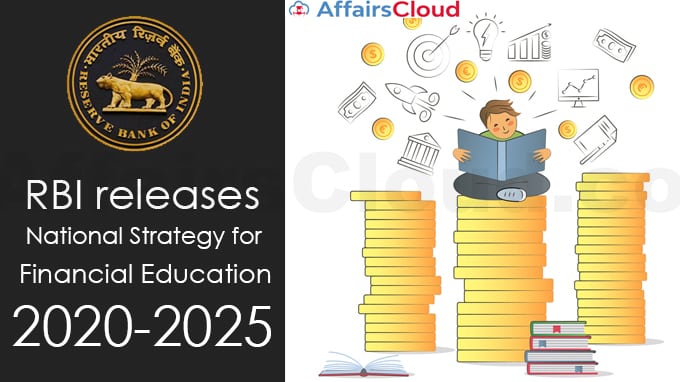 On the lines of the review of progress made under the first National Strategy for Financial Education (NSFE: 2013-2018) the revised NSFE (2020-2025) has been prepared and the document for the same was released by Mahesh Kumar Jain, Deputy Governor, Reserve Bank of India (RBI) on August 20, 2020.
On the lines of the review of progress made under the first National Strategy for Financial Education (NSFE: 2013-2018) the revised NSFE (2020-2025) has been prepared and the document for the same was released by Mahesh Kumar Jain, Deputy Governor, Reserve Bank of India (RBI) on August 20, 2020.
- This NSFE 2020-2025, has been prepared by the National Centre for Financial Education (NCFE) in consultation with all (four) the Financial Sector Regulators viz. RBI, Securities and Exchange Board of India (SEBI), Insurance Regulatory and Development Authority of India (IRDAI) and Pension Fund Regulatory and Development Authority (PFRDA), along with Department of Financial Services (DFS) and other Ministries of Govt. of India under the aegis of the Technical Group on Financial Inclusion and Financial Literacy (TGFIFL) chaired by Deputy Governor, RBI.
- Furthermore, TGFIFL was formed under the Financial Stability and Development Council (FSDC) chaired by Union Finance Minister Nirmala Sitharaman.
- The Strategy recommended adoption of a Multi-Stakeholder Approach to achieve financial well-being of all Indians
- TGFIFL would be responsible for periodic monitoring and implementation of NSFE (2020-2025).
Need of NSFE (2020-2025):
Its objective is to impart financial literacy by empowering various sections of the population to develop adequate knowledge, skills, attitude and behaviour which are needed to manage their money better and plan for their future.
Key Recommendations:
-There are the Strategic Objectives laid down in NSFE 2020-2025 and in order to achieve them, the document recommends adoption of a ‘5 C’ approach viz. Content, Capacity, Community, Communication and Collaboration.
-There should be insertion/updation of financial Literacy content for school children- VI to X (including curriculum and co-scholastic), teachers, young adults, women, new entrants at workplace/entrepreneurs (MSMEs), senior citizens, persons with disabilities, illiterate people, etc.
-Courses like B.Ed./M.Ed. should include financial education besides other teachers’ training courses to create a cadre of financially educated teaching professionals.
–The Strategy also suggests adoption of a robust ‘Monitoring and Evaluation Framework’ to assess the progress made under the Strategy.
-There should be development of a financial literacy mobile app, and leverage social media.
Recent Related News:
In accordance with the India’s International Investment Position (IIP) data as at end-March 2020, released by Reserve Bank of India (RBI) in July 2020, Foreign Direct Investment (FDI) in the country has raised by $19 billion while portfolio investment declined by $13.7 billion during 2019-20.
About Reserve Bank of India (RBI):
Headquarters– Mumbai, Maharashtra
Formation– 1 April 1935
Governor– Shaktikanta Das
Deputy Governors– 4 (Bibhu Prasad Kanungo, Mahesh Kumar Jain, Michael Debabrata Patra, one is yet to be appointed).




